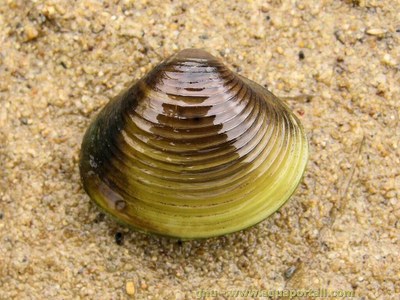Thesis defence by Martin Vastrade
- https://ilee.unamur.be/events/thesis-defence-by-martin-vastrade
- Thesis defence by Martin Vastrade
- 2025-02-17T17:30:00+01:00
- 2025-02-17T21:00:00+01:00
- When Feb 17, 2025 from 05:30 PM to 09:00 PM (Europe/Brussels / UTC100)
- Where M21 - Rue Grafé, 3
- Web Visit external website
-
Add event to calendar
 iCal
iCal
 Title: Evolution and consequences of androgenesis in the invasive clam genus Corbicula
Title: Evolution and consequences of androgenesis in the invasive clam genus Corbicula
In most eukaryotes, sexual reproduction involves the production of reduced gametes by canonical meiosis, followed by fertilisation to restore parental ploidy and produce genetically variable offspring. However, different modes of reproduction have emerged independently and repeatedly in eukaryotes, showing various modifications of the mechanisms of gametogenesis to produce offspring that restore or maintain parental ploidy without canonical meiosis. Among these, several modes of asexual reproduction still involve meiosis and fertilisation, but only the paternal or maternal genome is passed on to the next generation. One such mode of reproduction is androgenesis, in which the offspring inherit only the entire paternal nuclear genome, while the maternal nuclear chromosomes are lost through various processes. This mode of reproduction allows clonal transmission of the paternal genome to the offspring, while the maternal nuclear genome is not transmitted. In most cases, however, the mitochondrial genome of the oocyte is transmitted. Androgenesis is considered to be sexual parasitism, where the ova of females are resources used by males to propagate their genes. This sexual parasitism can even occur between distinct species.
 Although androgenesis is a rare mode of reproduction in nature, it is widespread in clams of the genus Corbicula. This group of bivalves has complex reproductive characteristics: the mode of reproduction can be sexual, involving uniflagellate spermatozoa, or androgenetic, with the production of unreduced biflagellate spermatozoa; the level of ploidy varies from diploidy, triploidy, or tetraploidy; the sexual system includes strict gonochorism, simultaneous hermaphroditism, androdioecy, trioecy, even sequential hermaphroditism and gynodioecy; finally, their larval incubation strategies include oviparity, ovoviviparity or viviparity. Surprisingly, while androgenetic lineages of Corbicula are abundant in Asia, Africa and Oceania, and invasive in America and Europe, sexual species remain restricted to a few localities in their native range.
Although androgenesis is a rare mode of reproduction in nature, it is widespread in clams of the genus Corbicula. This group of bivalves has complex reproductive characteristics: the mode of reproduction can be sexual, involving uniflagellate spermatozoa, or androgenetic, with the production of unreduced biflagellate spermatozoa; the level of ploidy varies from diploidy, triploidy, or tetraploidy; the sexual system includes strict gonochorism, simultaneous hermaphroditism, androdioecy, trioecy, even sequential hermaphroditism and gynodioecy; finally, their larval incubation strategies include oviparity, ovoviviparity or viviparity. Surprisingly, while androgenetic lineages of Corbicula are abundant in Asia, Africa and Oceania, and invasive in America and Europe, sexual species remain restricted to a few localities in their native range.
Due to the unusual life traits of Corbicula clams, their taxonomy is unresolved and species definition is complex within this group. Androgenetic lineages can use oocytes from other species to reproduce, resulting in ‘cytonuclear mismatch’: the nuclear genome of one species is combined with the mitochondrial genome of another species in the offspring. In some cases, the maternal genome is partially transmitted, leading to the formation of polyploid zygotes with both paternal and maternal nuclear genomes. When this occurs between different Corbicula species, it leads to the formation of hybrids, blurring the delimitation of species in this taxon.
The genus Corbicula is a unique model for studying the evolution of reproductive characteristics in animals. The present work addresses questions on the evolution of androgenesis, casual sexuality, species delimitation, hybridisation and biological invasion.
Further information in French.
Martin will present the results of his PhD thesis, conducted in the Department of Biology - Unité de Recherche en Biologie environnementale et evolutive (URBE) under the supervision of Karine Van Doninck.
 Institute of Life, Earth and Environment
Institute of Life, Earth and Environment
